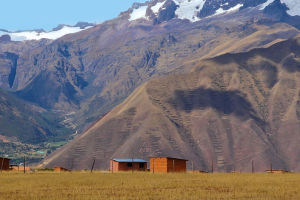The first time you step onto the Avenue of the Dead in Teotihuacan, something hits you—not just the dry Mexican sun or the grandeur of the pyramids, but the weight of mystery.
How did an ancient civilization with no written language build a city so vast and geometrically precise? And why was it eventually abandoned?
If you're planning to visit Teotihuacan, don't just treat it like a photo stop near Mexico City. This site has layers—of history, cosmic alignment, political power, and even underground secrets—that few tourists fully grasp. Here's how to experience it with insight, not just snapshots.
1. What You're Really Looking At
It's tempting to say Teotihuacan is all about the pyramids. But to see this place properly, you need to reframe it.
✔ It was once home to over 100,000 people.
✔ The city's layout reflects astronomical alignments.
✔ Ritual, politics, and urban planning were tightly woven together.
The name "Teotihuacan" wasn't what the original builders called it—that name came later from the Aztecs, who found the ruins centuries after they were abandoned. It means "the place where the gods were born."
The city's orientation isn't random. The 2.5-mile Avenue of the Dead aligns 15.5° east of true north—matching celestial movements. The Pyramids of the Sun and Moon mirror natural features like Cerro Gordo mountain, suggesting the city's design wasn't just functional—it was cosmological.
2. How to Explore It Right
You can visit Teotihuacan in half a day—but that would barely scratch the surface. If you want to see it with real depth, here's what to know:
Get there early (or go late)
The site opens at 8 a.m., and crowds usually arrive by 10:30. If you want to climb the pyramids without weaving through tour groups, aim to arrive before 9. The afternoon sun can be harsh, so bring sunscreen and water either way.
Entry is inexpensive, but extras add value
The general entrance fee is about $5.50 USD. However, consider paying for a guide (~$20–$30 USD per group) or booking a walking tour that includes the on-site museum and lesser-known areas like La Ciudadela (The Citadel).
Skip the hot air balloon unless...
Balloon rides are popular here, starting around $130 USD. They offer great photos but don't actually enter the site. If you're into aerial views and don't mind a sunrise wake-up, it's worth doing before your ground visit, not instead of it.
3. The Hidden Depths of the Pyramid of the Sun
This is the largest structure on the site—and climbing its 248 steps is a physical challenge. But what lies beneath the Pyramid of the Sun is far more interesting.
In 2011, archaeologists discovered a man-made tunnel and cave system directly beneath the pyramid. These weren't burial chambers, they seem to be symbolic pathways—perhaps used for rituals of rebirth or spiritual transformation.
According to Dr. Linda Manzanilla, a leading Teotihuacán archaeologist, the Pyramid of the Sun functioned symbolically as a stage linked to a sacred underworld, highlighting its ritual power rather than serving as a tomb.
When you stand at the top, remember: the real story might be what lies below you.
4. What Most Visitors Miss
Teotihuacan is more than pyramids. Here are a few places people often skip—but shouldn't:
1. The Palace of Quetzalpapalotl
Just behind the Pyramid of the Moon, this palace features intricate carved pillars and vivid murals. Entry is included in your general ticket.
2. The Museum (Museo de Sitio)
Don't leave without walking through this museum near Gate 5. It holds artifacts, reconstructed murals, and even skeletons recovered from ritual burials. Entry is included in your ticket and takes 30–45 minutes.
3. La Ciudadela and the Temple of the Feathered Serpent
Often skipped because it's near the entrance, this massive plaza houses the third major pyramid. Look closely at the stone carvings—each feathered serpent represents power and fertility. Some believe this was the political heart of the city.
5. Tips to Travel Smarter
• Transportation:
You can reach Teotihuacan from Mexico City via public bus (departing from Terminal Norte, ~$3 USD each way). Buses leave every 15–30 minutes and take about 1 hour.
• Restrooms & Food:
There are basic restroom facilities and several small restaurants near entrances. Avoid street vendors selling "souvenirs" inside the complex.
• What to Wear:
Comfortable walking shoes are essential. The stones can be uneven, and shade is rare. A hat, water bottle, and sunscreen are musts.
• Best Time to Visit:
November to April offers cooler, drier weather. Avoid weekends and public holidays to beat the crowds.
What Will You Carry Home?
A photo from the top of the Pyramid of the Moon will wow your followers. But the real takeaway? That this city—massive, mysterious, and still not fully understood—was once alive with ceremony, science, and skywatching.
So next time you're walking through a historic site, ask yourself: What's beneath your feet, and what part of the story is still hidden?
Let me know if Teotihuacan is on your list—or if you've already uncovered one of its secrets.


